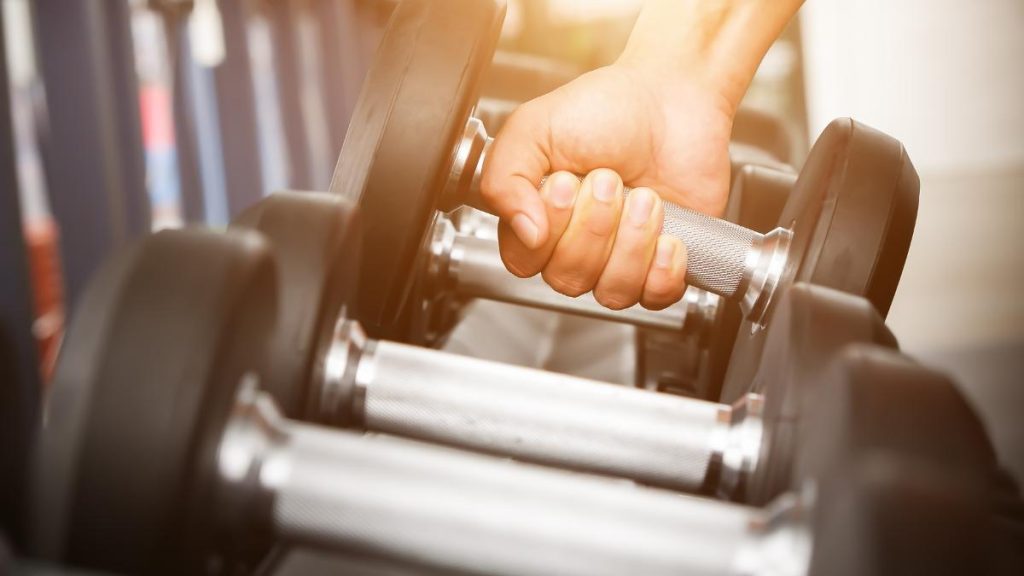When it comes to achieving fitness goals, intensity is a game-changer. Adding more intensity to your workouts can accelerate muscle gains, improve cardiovascular health, and help you break through plateaus. However, ramping up intensity doesn’t mean overtraining or risking injury—it’s about smarter, more efficient training techniques. Here’s how to add more intensity to your workouts effectively.
Why Should You Add More Intensity to Your Workouts?
Adding intensity to your workouts pushes your muscles beyond their comfort zone, promoting growth and endurance. Increasing workout intensity can also shorten training time, making each session more efficient. By incorporating targeted techniques, you’ll challenge your body to adapt, which leads to better strength, endurance, and overall fitness.
What Are the Best Techniques to Increase Workout Intensity?
Increasing workout intensity can be done through various techniques. Here are some of the best ways to maximize your efforts in the gym:
- Incorporate Supersets and Drop Sets
- Supersets: Perform two exercises back-to-back with no rest in between. For example, pair squats with lunges to target similar muscle groups intensely.
- Drop Sets: Start with a heavyweight, perform a set until failure, then reduce the weight and continue the exercise. Drop sets are ideal for muscle hypertrophy as they fully fatigue the muscles.
- Add Plyometric Moves
- Plyometrics like jump squats, burpees, and box jumps add explosive movements to your workout, raising your heart rate and challenging your muscles. These exercises improve power and athleticism, especially when added to strength routines.
- Reduce Rest Periods
- Shortening your rest intervals between sets forces your body to work harder, increasing your heart rate and intensity. For maximum effect, try reducing rest to 30 seconds between sets or circuit-style workouts.
- Use Time Under Tension (TUT)
- TUT emphasizes the amount of time your muscles are working during each set. Slow down an exercise’s eccentric (lowering) phase, such as taking three seconds to lower the weight in a bicep curl. This increases muscle engagement and builds strength.
- Implement High-Intensity Interval Training (HIIT)
- HIIT combines short bursts of high-intensity exercise with brief rest periods. This method improves cardiovascular health and burns calories faster than steady-state cardio—for example, alternate 30 seconds of sprinting with 30 seconds of rest.
- Try Progressive Overload
- Progressive overload is a cornerstone for building strength and muscle. Each week, aim to increase weight, reps, or sets to continually challenge your muscles. Track your workouts to ensure you’re consistently pushing your limits.
How Does Mind-Muscle Connection Impact Workout Intensity?
Focusing on the muscle you’re working, known as the mind-muscle connection, can increase activation and improve results. Studies show that when you mentally engage with the muscle being targeted, it leads to more efficient and intense workouts. Here’s how to improve your mind-muscle connection:
- Visualize the movement and contraction in your target muscle.
- Practice slow, controlled reps to feel the muscle working.
- Avoid momentum; instead, concentrate on the muscle throughout the entire movement.
What’s the Role of Resistance and Assistance Tools?
Adding resistance tools, such as bands or weights, or using assistance tools like TRX bands can amplify intensity by modifying how your muscles engage.
- Resistance Bands: Adding bands to moves like squats or deadlifts creates constant tension throughout the range of motion, making the exercise more challenging.
- Weighted Vests or Ankle Weights: Adding weights to your body can make bodyweight exercises, like lunges or pull-ups, more challenging.
- TRX Bands: Suspension training with TRX bands uses body weight and gravity, engaging your core and stabilizer muscles for increased intensity.
Can Changing Exercise Tempo Enhance Intensity?
Adjusting the tempo of your exercises can add a new challenge without increasing weight. Try slower reps for more muscle engagement or fast, explosive movements for power.
- Slow and Controlled: Perform the eccentric phase of exercises, like lowering during a bench press, over 3-4 seconds. This engages the muscle for a more extended period, increasing intensity.
- Explosive Movements: In contrast, quick reps like box jumps or clapping push-ups emphasize speed and power, raising the workout’s intensity and calorie burn.
How Does Compound Lifting Boost Workout Intensity?
Compound exercises simultaneously engage multiple muscle groups and joints, leading to more intense workouts. Examples include:
- Deadlifts: Engages the hamstrings, glutes, lower back, and core.
- Bench Press: Targets the chest, triceps, and shoulders.
- Squats: Works the quads, hamstrings, glutes, and core.
These lifts challenge large muscle groups and allow for heavier loads, leading to greater caloric expenditure and muscle activation.
Should You Use Heart Rate Tracking for Intensity?
Tracking your heart rate can help you monitor intensity levels, ensuring you work within an optimal range for your goals. Here’s how to use heart rate effectively:
- Calculate Target Heart Rate: Aim to reach 70-85% of your max heart rate for high-intensity training.
- Interval Training: Monitor heart rate during HIIT sessions to ensure it rises and falls according to the intervals.
- Steady State Training: Monitor heart rate during moderate cardio to maintain intensity.
How Can You Modify Your Routine to Add Intensity?
Mixing up your routine is a great way to keep workouts challenging. Here are a few ways to alter your regimen:
- Circuit Training: Perform multiple exercises in sequence with minimal rest between each. This keeps your heart rate up and allows for strength and cardio benefits.
- Add Isolation Exercises at the End: Focus on smaller muscle groups with isolation exercises like bicep curls or calf raises. Do these after compound lifts for a “burnout” effect.
- Use Unstable Surfaces: Incorporate exercises with stability balls or balance boards to activate more muscle groups and increase intensity.
Sample High-Intensity Workout Plan
Here’s a sample workout plan that incorporates the techniques mentioned for a high-intensity full-body routine:
- Warm-up: 5 minutes of dynamic stretching and light cardio
- Circuit 1:
- Push-ups (Superset with squats) – 3 sets x 15 reps each
- Jump Squats – 3 sets x 15 reps
- Rest 30 seconds between sets
- Circuit 2:
- Deadlifts – 4 sets x 10 reps
- Bent-over Rows – 4 sets x 10 reps
- Rest 30 seconds between sets
- HIIT Session:
- Sprint for 30 seconds, walk for 30 seconds (Repeat for 8–10 minutes)
- Finisher:
- Plank Hold – 1 minute x 3 sets
- Bicycle Crunches – 3 sets x 20 reps
Key Takeaways
- Combine techniques such as supersets, HIIT, and TUT for a challenging workout.
- Use tools like resistance bands and weighted vests to add intensity.
- Track your progress and monitor your heart rate to stay within your target intensity range.
By strategically adding intensity to your workouts, you’ll see faster progress, improved endurance, and stronger muscle gains.




